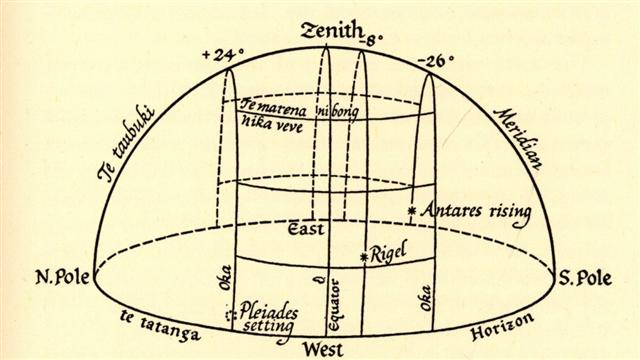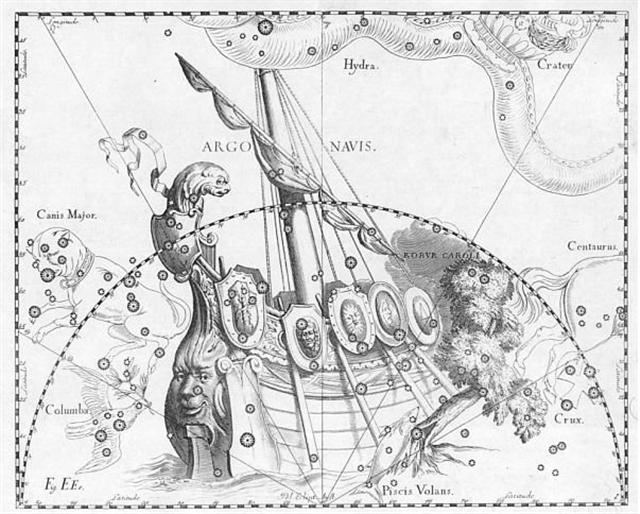2. In the Gilbertese 'single-wing' house the horizon is named te tatanga:
And the distant horizon is conspiciously mentioned in Barthel's translation in a way which presumably means it could is a Sign: On the twenty-fifth day of the first month (Vaitu Nui), Ira and Makoi set sail; on the first day of June ('Maro'), the bow of Ira's canoe appeared on the distant horizon, came closer and closer on its course, and sailed along, and finally (one) could see the (new home) land. The canoe reached the islets (off the coast), and Ira saw that there were three such islets. Ira said, 'Hey you, crew of young men, the vision of Hau Maka, our father, which he revealed to me, has come true. There are 'the handsome sons of Te Taanga, who are standing in the water', for this is the name that the dream soul of Hau Maka gave them. Unforgotten (? kai viri kai viri) are they, these three. And therefore this is the (right) land lying there; this is Te Pito O Te Kainga, which also received its name from the dream soul.' (Manuscript E p. 17.) Only the bow of the 'canoe' appears on the distant horizon, and maybe we should associate it with the Argo constellation which shows only its stern:
(Drawn by Johannes Hevelius) According to a variety of sources of the legend, the Argo was said to have been planned or constructed with the help of Athena. According to other legends it contained in its prow a magical piece of timber from the sacred forest of Dodona, which could speak and render prophecies. Argo Navis is the only one of the 48 constellations listed by the 2nd century astronomer Ptolemy that is no longer officially recognised as a constellation. It was unwieldy due to its enormous size: were it still considered a single constellation, it would be the largest of all. In 1752, the French astronomer Nicolas Louis de Lacaille subdivided it into Carina (the keel, or the hull, of the ship), Puppis (the poop deck), and Vela (the sails). When Argo Navis was split, its Bayer designations were also split. Carina has the α, β and ε, Vela has γ and δ, Puppis has ζ, and so on. The constellation Pyxis (the mariner's compass) occupies an area which in antiquity was considered part of Argo's mast (called Malus). However, Pyxis is not now considered part of Argo Navis, and its Bayer designations are separate from those of Carina, Puppis and Vela. (Wikipedia) By now we must draw a conclusion: The 'Tree' is the leading person in this grand old story. We remember how Charles II hid himself for 24 hours in an 'oak', and in the drawing above this oak is at right, mixing its roots with the ship. Robur Carolinum, Charles' Oak, the Quercia of Italy and the Karlseiche of Germany, was formally published by Halley in 1679 in commemoration of the Royal Oak of his patron, Charles II, in which the king had lain hidden for twenty-four hours after his defeat by Cromwell in the battle of Worcester, on the 3rd of September 1651 ... The oak of myth is felled at midsummer and its trunk is turned into the planks of a ship. And the prow of the ship is hidden inside the bushy crown of the oak in a complex composition involving, it seems, a rain cloud and the rump of a mare. If only the prow of the canoe of Ira is visible at the distant horizon, then it means we have moved from the outside world we know to the unknown inside world - as when the hole of an ear becomes a spike of an ear on the other side of the 'horizon in time'. |

